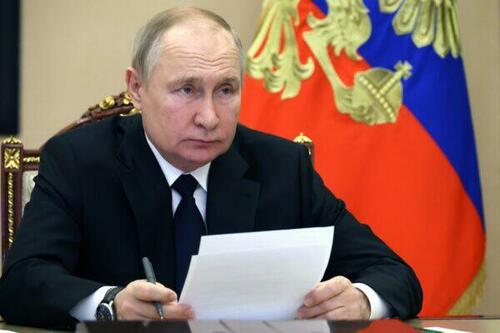NATO Countries Blame Russia As Mystery Drones Keep Buzzing Key European Military Installations
A string of unexplained drone incursions over military, industrial and transportation hubs across Europe is raising fresh concerns about the vulnerability of NATO territory to covert surveillance and sabotage.

In the French border town of Mulhouse, authorities are probing a Nov. 11 incident in which a police officer reported a drone hovering above a police station courtyard shortly before midnight. Moments later, the aircraft maneuvered over a nearby rail depot and filmed a military convoy transporting Leclerc main battle tanks before disappearing. Investigators have yet to track down the device or its operator.
Local prosecutors said there is “no evidence to suggest whether this was a deliberate flight…or simply an accidental overflight.” But the episode followed closely on the heels of a far more targeted intrusion at the Eurenco plant in Bergerac, where defense officials say drones twice breached the airspace above one of Europe’s most sensitive ammunition and explosives facilities. The plant supplies propellants used in the artillery shells shipped to Ukraine.
French investigators called those flights “deliberate” and “clearly targeted,” intensifying fears that unmanned aircraft are scouting the continent’s military infrastructure and industrial supply lines, the Washington Times reports.
A Continent-Wide Pattern Emerges
The French incidents are part of a broader uptick in mysterious drone activity. German officials have logged repeated breaches over Ramstein Air Base, Rheinmetall arms factories and energy infrastructure. And of course, the chief suspect in all of this among Western sources is Russia – who western analysts warn may be waging a “hybrid” campaign.
Denmark faced its own wave of disruptions starting Sept. 22, when large drones forced Copenhagen’s airport to shut down for hours. Within days, similar UAVs appeared over other strategic points, including three regional airports and Skrydstrup air base, home to Denmark’s F-16 fleet and incoming F-35s. Media reports described drones circling the base for hours without interception, prompting political fallout over the failure to neutralize small off-the-shelf aircraft.
Prime Minister Mette Frederiksen said Denmark had “been the victim of hybrid attacks” and warned that such flights “could multiply.” The country’s Defense Intelligence Service later declared that “Russia is conducting hybrid warfare against Denmark and the broader West,” citing drone incursions and GPS jamming.
Norwegian authorities, meanwhile, have detained several Russian nationals at airports and border posts for flying drones or possessing drone footage, adding to suspicions that some activity is linked to Russian intelligence.
Germany has faced similar activity. In December, security services confirmed sightings of “mystery drones” over the U.S. Air Force’s Ramstein hub for Ukraine operations and over Rheinmetall facilities. Officials have not named suspects, but the flights add to concerns about Russian espionage and sabotage since the full-scale invasion of Ukraine. By October, Germany had recorded 172 drone-related air-traffic disruptions this year, prompting draft legislation to empower police to shoot down dangerous drones and establish a federal drone-defense center by mid-December.
Belgium’s Nuclear-Adjoining Base Exposed
Belgium has experienced some of the most alarming events. Over two weekends in late October and early November, multiple drones were spotted near Kleine Brogel air base, widely believed to store U.S. tactical nuclear weapons. Defense Minister Theo Francken labeled the pattern a “spying operation,” saying small drones appeared to probe security radio frequencies before larger systems attempted to “destabilize” the area while evading jamming systems.
“They come to spy, to see where the F-16s are, where the ammunition is, and other highly strategic information,” Francken said.
Around the same time, unidentified drones forced temporary closures at Brussels and Liege airports, disrupting dozens of flights and stranding passengers.
Belgium has since accelerated national air-security plans, established new surveillance measures and convened its National Security Council. With NATO and EU headquarters located in Brussels, the government considers the incidents a top-tier security concern.
Across the continent, the pattern is consistent: small, commercially available drones operating at night or in poor visibility, repeatedly probing the seams of NATO’s defenses around air bases, logistics corridors, energy infrastructure and even nuclear-adjacent sites.
For now, investigators in multiple countries are scrambling to match technology, tactics and flight signatures across borders. The growing consensus: Europe’s drone problem is no longer sporadic. It is systemic – and increasingly strategic.
Tyler Durden
Sat, 11/22/2025 – 08:45ZeroHedge NewsRead More





 T1
T1



